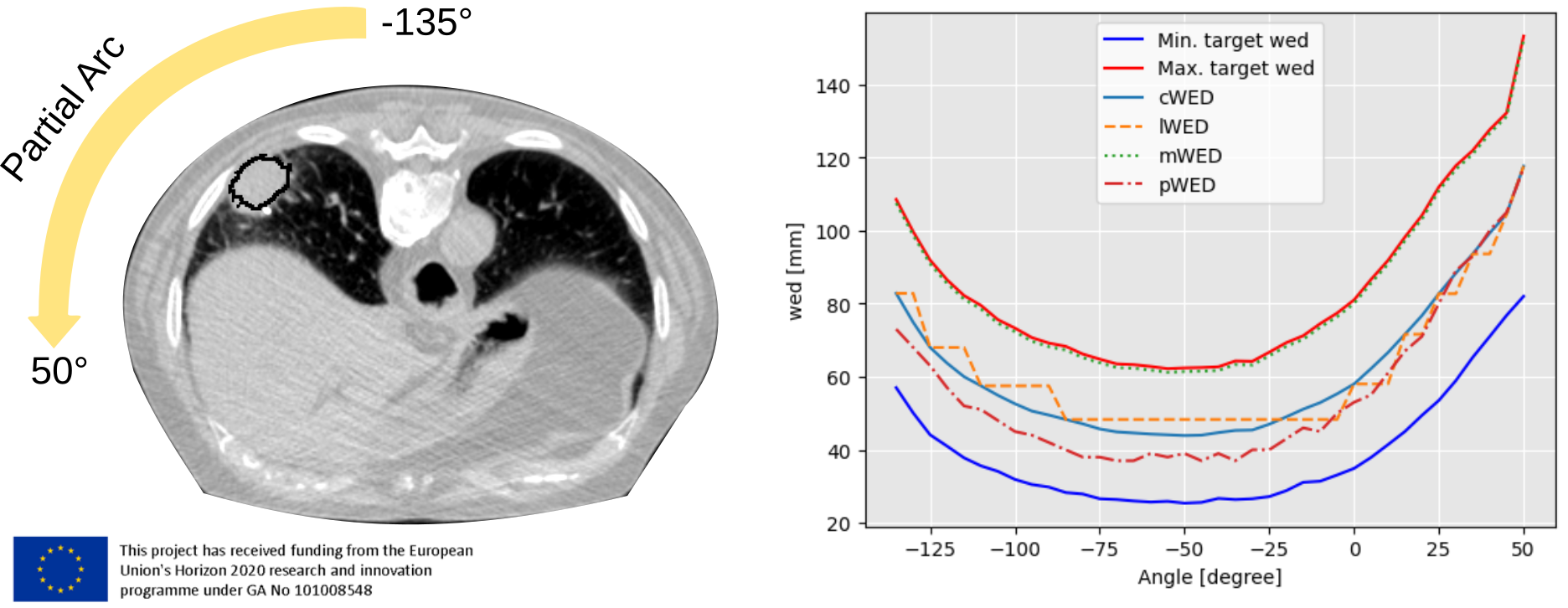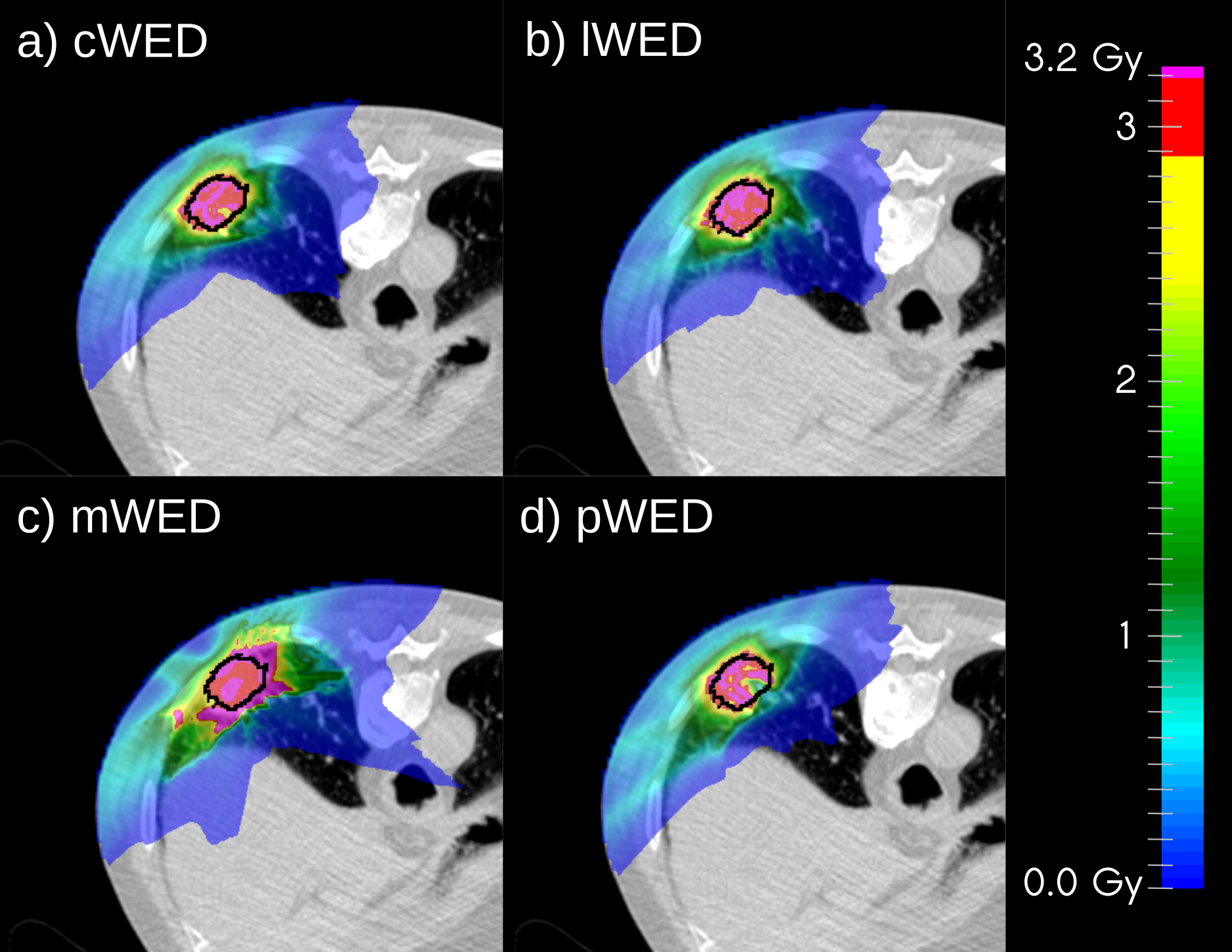A-priori beam energy selection for heavy ion arc therapy
PO-1494
Abstract
A-priori beam energy selection for heavy ion arc therapy
Authors: Lennart Volz1, Marco Durante2,3, Christian Graeff2
1GSI Helmholtz Center for Heavy Ion Research GmbH, Biophysics , Darmstadt, Germany; 2GSI Helmholtz Center for Heavy Ion Research GmbH, Biophysics, Darmstadt, Germany; 3Technical University of Darmstadt, Institute of Condensed Matter Physics, Darmstadt, Germany
Show Affiliations
Hide Affiliations
Purpose or Objective
Heavy ion arc therapy offers potential for improved dose conformity and range uncertainty mitigation compared to the current treatment delivery approach. However, heavy ion gantries for delivering arc therapy are rare and the time structure of synchrotron generated heavy ion beams makes any energy change during arc delivery time consuming. In this work different approaches to select the beam energies are investigated toward gantry less arc therapy with a continuously rotating patient chair within the HITRIplus project.
Material and Methods
Biologically optimized carbon ion arc plans were generated for a patient with a tumor in the lower right lung with the TRiP98 treatment planning software. Tumor motion was not yet considered in the optimization. To avoid organs-at-risk, a half-arc was planned, spanning 38 fields separated at 5° (Figure 1 Left). For achieving highest delivery efficiency, each field was constraint to a single energy, selected based on a-priori information on the field-specific water equivalent depth (WED) of the target voxels (Figure 1 right). As first approach, the field beam energy was selected to correspond to the central tumor WED (cWED). To further limit energy changes and potentially enable continuous patient rotation during delivery, we investigated only assigning a field a new energy, if the central WED of the tumor changed from the previous field by more than 3 times the peak width induced by a 3mm ripple filter (lWED). As third approach, the maximum target WED was chosen to define the energy for each field (mWED). Finally, we investigated constraining each field’s energy such that the number of target voxels hit by the Bragg peak was maximum (pWED).

Fig. 1: Schematic depiction of the partial arc (left) and the energy selection process (right).
Results
The cWED approach resulted in inhomogeneous target coverage since not all voxels were reached (D95=86%). The lWED approach improved dose homogeneity, due to the smearing out of the particle stopping point within the tumor, but still could not provide sufficient target coverage (D95=87%). The pWED failed to produce any appreciable level of homogeneity or target dose coverage (D95=76%). The mWED approach avoided target underdosage (D95=91%) but produced unacceptable overdosage of healthy tissue. All approaches fell short in target homogeneity compared to a conventional approach with two opposing fields (D95=92%).

Fig. 2: Example dose distribution for the different approaches.
Conclusion
Allowing only a single energy per field potentially could be an efficient delivery option for heavy ion arc therapy. A-priori selection of the field energy would be a more direct planning approach compared to iterative optimization techniques. However, for partial arcs, using single points of reference, like the central tumor WED, leads to target dose inhomogeneity or extra dose to healthy tissue. Future work will consider combining approaches, allowing multiple energies for certain fields.